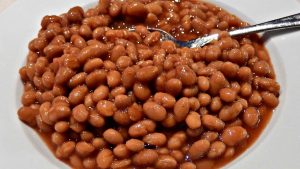
Back in college years, a senior would take his guitar and always sing “i love beans, i love beans oh” and we’d look at him in awe with questions like- same beans that makes anyone purge, and even gives heartburn to some?
Oh well, but really, those tiny little seeds called beans are quite nutritious and serve a great deal of health benefits to its consumer.
Let’s take a little survey on some types of beans, shall we?
- BLACK BEANS
” The black turtle bean is a small, shiny variety of the common bean (Phaseolus vulgaris) especially popular in Latin American cuisine, though it can also be found in the Cajun and Creole cuisines of south Louisiana”. Like all varieties of the common bean, it is native to the Americas[2], but has been introduced around the world. It is also used in Indian cuisine, Tamil cuisine, where it is known as karuppu kaaramani and in Maharashtrian cuisine, where it is known as Kala Ghevada.
Virtually 70% of the calories contained in black beans are from carbohydrates, and most of these carbs are in the form of starch. Interestingly, this starch is the “resistant starch” which doesn’t digest easily and passes through our upper digestive system without being broken down into simple sugars. So there is no fear of an increase in blood sugar.
NUTRITION
According to the National Nutrient Database one-half cup (86g) of cooked black beans contains approximately:
Energy: 114 kilocalories
Protein: 7.62 g
Fat: 0.46 g
Carbohydrate: 20.39 g
Fiber: 7.5 g 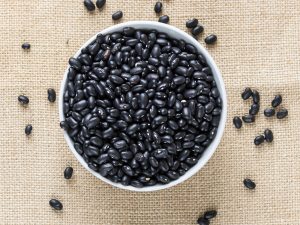
Sugars: 0.28 g
Calcium: 23 milligrams (mg)
Iron: 1.81 mg
Magnesium: 60 mg
Phosphorus: 120 mg
Potassium: 305 mg
Sodium: 1 mg
Zinc: 0.96 mg
Thiamin: 0.21 mg
Niacin: 0.434 mg
Folate: 128 msg
Vitamin K: 2.8 mg
Like other legumes, Black beans also offer a variety of phytonutrients like saponins, anthocyanins, kaempferol, and quercetin, all of which possess antioxidant properties.
RECIPES
- Make a hearty black bean soup by blending cooked black beans with onions, tomatoes, and your favorite spices
- Add black beans to burritos
- Blend cooked black beans with garlic, onion, fresh cilantro, and lime juice for a quick and easy bean dip
- Mix black beans, onions, lettuce, tomatoes, avocado, sharp cheddar cheese, and salsa together for a simple taco salad. Try these healthy recipes using black beans:
- Black bean burgers with chipotle mango guacamole
- Poblano chilaquiles
- Veggie fajitas
- Healthy two-grain southwest salad
- Heart-healthy chipotle chili
2. BLACK EYED PEA (COWPEA)
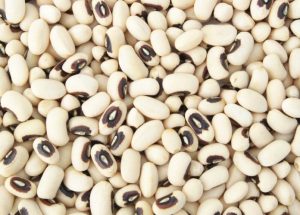
Commonly referred to as white beans or iron beans by Nigerians, Cowpea is a food and animal feed crop grown in the semi-arid tropics covering Africa, Asia, Europe, the United States, and Central and South America. It originated and was domesticated in Southern Africa and was later moved to East and West Africa and Asia.
The grains contain 25% protein and several vitamins and minerals. The plant tolerates drought, performs well in a wide variety of soils, and being a legume replenishes low fertility soils when the roots are left to decay.
NUTRITION
One cup (170 grams) of cooked black-eyed peas contains the following nutrients (1Trusted Source):
Calories: 194
Protein: 13 grams
Fat: 0.9 grams
Carbs: 35 grams
Fiber: 11 grams
Folate: 88% of the DV
Copper: 50% of the DV
Thiamine: 28% of the DV
Iron: 23% of the DV
Phosphorus: 21% of the DV
Magnesium: 21% of the DV
Zinc: 20% of the DV
Potassium: 10% of the DV
Vitamin B6: 10% of the DV
Selenium: 8% of the DV
Riboflavin: 7% of the DV
RECIPES
- Could be cooked alongside palm oil, fish and vegetable
- Could be blended then fried and used to make akara (beans cake) or blended and boiled in nylon or bowls and used to make moi moi (beans pudding). You can go totally local by adding pap, oats, or bread to this recipe. Yummy!
In addition to the nutrients listed above, black-eyed peas are high in polyphenols, which are compounds that act as antioxidants in the body to prevent cell damage and protect against disease.
3. CANNELLINI BEANS
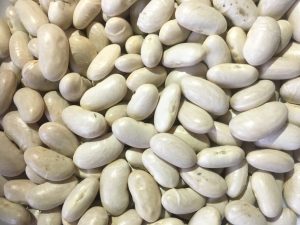
Cannellini beans are a type of kidney bean known for their large size and creamy white hue. They’re especially popular in Italian fare, particularly in Tuscany, and have a subtle nutty flavor. When cooked, they take on a pleasant, almost fluffy texture.
“Cannellini beans can be substituted for other, similar white beans. Whether you’re trying to eat more plant-based protein or you just enjoy their taste and texture, cannellini beans are an excellent healthy choice”.
NUTRITION
One cup of cannellini beans, boiled and cooked without salt, contains
- calories- 225kcals
- protein- 15.4g,
- fat-0.9g
- carbohydrates-40.4g
- sugar-0.6g
Cannellini beans contain a wealth of B vitamins, including B12. They also provide iron, potassium, zinc, and other essential minerals.
RECIPES
Beans:
- 1.5cups: dry cannellini beans, soaked in water 8 hours overnight
- 1.5 cups garlic, coarsely chopped 3 cloves fine sea salt
- 1 tsp extra virgin olive oil, plus more for drizzling 2 tbsp onion, finely diced 1 garlic, minced 3 cloves diced tomatoes
- 1-28oz can dry white wine
- 1/2 cup dried dill
- 1 tsp dried oregano
- 1/2 tsp feta cheese,
- crumbled 6oz salt and pepper to taste
- Dill Oil: fresh dill,
- loosely packed 1 cup lemon zested and juiced
- 1 extra virgin olive oil 1/4 cup
- sea salt 1/4 tsp
Direction
Prep Time: 25 minutes Cook Time: 90 minutes Yield: 6 servings
For the tomato baked beans:
- Add soaked beans and 4 cups of water to a large pot over high heat. Add chopped garlic and fine sea salt, and bring to a boil. Reduce the heat to medium and bring to a simmer. Cover the pot, and allow to simmer for 30-60 minutes, or until the beans are tender.
2.While the beans are cooking, make the tomato sauce: Add olive oil to an oven-safe enamel pot over medium- high heat. Add chopped onion and minced garlic, and cook until soft and translucent, about 5 minutes. Add canned tomatoes (including juice), wine, and dried herbs. Bring to a simmer and allow to simmer for about 10- 15 minutes, until slightly thickened and saucy.
3.Preheat the oven to 400 degrees Fahrenheit. Once the beans are cooked, drain and add them to the pot with the tomato sauce. Toss to combine the beans and sauce. Sprinkle crumbled feta cheese over the surface of beans, and then place the pot in the oven. Bake, uncovered, for 30 minutes, until feta crumbles are melted and sauce is bubbling.
Allow to cool, and serve with a drizzle with lemony dill oil (recipe below) and some crusty, whole grain bread. Add salt and pepper to taste, if desired.
For the lemony dill oil:
Add all ingredients to a blender and process until a thin pesto-like texture has been achieved. Drizzle over beans upon serving.
4. FAVA BEANS
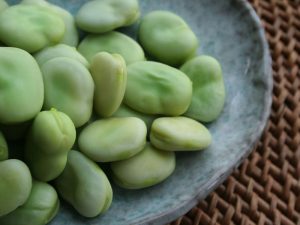
Fava beans, also known as broad beans, are one of the oldest cultivated crops. Unlike other beans, fava beans are eaten when they’re still young—additionally, immature pods and leaves are edible as long as you don’t suffer from favism. They’re popular in soups, steamed inside their pods, mashed, and fried.
NUTRITION
Raw mature fava beans are
- 11% water,
- 58% carbohydrates,
- 26% protein, and
- 2% fat
- 341 calories
- Folate (106% DV) and dietary minerals, such as manganese, phosphorus, magnesium, and
- iron (range of DV 52 to 77%), have considerable content (table).
- B vitamins have moderate to rich content (19 to 48% DV).
RECIPE
Fava bean salad with fennel and radish.
- 1 cup of shelled fava beans
- 1.5 tbsps of fresh lemon juice
- 1.5 tsp extra-virgin olive oil
- ¼ tsp ground black pepper
- ⅛ tsp salt
- 2 cups of thinly sliced fennel bulb
- 2 cups of arugula leaves
- ¼ cup thinly sliced radish
- ¼ cup walnuts toasted and chopped
- 1.5 ounces singing brook.
Directions
Step 1
Remove shells from beans. Place beans in a large pot of boiling water; cook for 20 seconds. Drain; rinse with cold water. Drain well. Remove and discard tough outer skins from beans.
Step 2
Combine juice, oil, pepper, and salt in a large bowl, stirring with a whisk. Add beans, fennel, and arugula; toss to coat. Place about 3/4 cup fennel mixture on each of 6 plates. Sprinkle evenly with radish, walnuts, and cheese.
5. LIMA BEANS
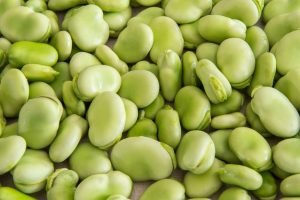
Also known as butter beans, lima beans are native to Central and South America—in fact, Lima, Peru, is their namesake. Lima beans are usually seen in dishes such as succotash, or simply boiled with a salty piece of meat. They’re particularly high in potassium, and like other legumes, can help stabilize blood sugar levels.
The pod of the lima bean is flat, oblong and slightly curved, averaging about three inches in length. Within the pod are the two to four flat kidney-shaped seeds that we call lima beans. The seeds are generally cream or green in color, although certain varieties feature colors such as white, red, purple, brown or black.
NUTRITION
According to USDA, ½ cup of Lima beans contains:
- Calories: 88
- Fat: 0.7g
- Sodium: 6.2mg
- Carbohydrates: 15.7g
- Fiber: 3.8g
- Sugars: 1.2g
- Protein: 5.3g
Lima beans are an excellent source of the trace mineral, molybdenum, an integral component of the enzyme sulfite oxidase, which is responsible for detoxifying sulfites. Sulfites are a type of preservative commonly added to prepared foods like delicatessen salads and salad bars. Persons who are sensitive to sulfites in these foods may experience rapid heartbeat, headache or disorientation if sulfites are unwittingly consumed. If you have ever reacted to sulfites, it may be because your molybdenum stores are insufficient to detoxify them.
RECIPE
Rosemary Olive Oil White Bean Dip
- 1 can (15.5 ounces) low-sodium white beans, drained and rinsed
- 1 clove garlic
- 1 small lemon, juiced
- 1 tablespoon chopped fresh rosemary
- 1 tablespoon extra virgin olive oil
- 1/2 teaspoon freshly cracked pepper
Direction
- Place all ingredients in a blender and going together
- Serve with raw vegetables or whole grain crackers.
6.GARBANZO BEANS
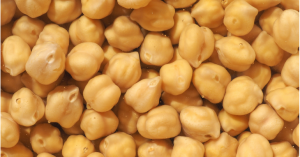
Also known as chickpeas, garbanzo beans, are, of course, the building blocks of Mediterannean and Middle Eastern staples such as hummus and falafel. They were first cultivated in the Middle East around 7,500 years ago, and have remained popular for their versatility and high protein levels. They’re a well-known meat substitute, and they can also be roasted, eaten cold, or ground into flour and baked.
NUTRITION
Serving Size 100 g
Calories 378
% Daily Value *
Total Fat 6g 8 %
Saturated Fat 0.6g 3 %
Sodium 24mg 1 %
Total Carbohydrate 63g 23 %
Dietary Fiber. 12g 43 %
Sugar 11g
Protein 20g 40 %
Vitamin D 0.00mcg 0 %
Calcium 57.00mg 4 %
Iron 4.31mg 24 %
Potassium 718mg 15 %
Chickpeas contain a soluble fiber called raffinose, a type of oligosaccharide that is fermented in the colon by beneficial bacteria called Bifidobacterium. As bacteria break down this fiber, a short chain fatty acid called butyrate is produced. Butyrate plays a role in reducing inflammation in the cell wall of the colon, promoting regularity in the intestines, and possibly preventing colorectal cancer by promoting cell apoptosis (death).
RECIPE
Chickpea meatballs with crunchy romaine salad
- 3 cups torn romaine lettuce (about 3 oz.)
- 1 cup loosely packed fresh flat-leaf parsley leaves
- 1 cup chopped English cucumber
- 1 cup quartered grape tomatoes (about 5 oz.)
- 1/3 cup slivered red onion 3 garlic cloves,
- divided 3 tablespoons fresh lemon juice
- 1 1/2 tablespoons water
- 1/4 teaspoon black pepper
- 5 tablespoons tahini (sesame seed paste),
- divided 1/4 cup extra-virgin olive oil,
- divided 1 1/8 teaspoons kosher salt,
- divided 1 (15-oz.) can unsalted chickpeas,
- drained 1/2 cup whole-wheat panko (Japanese breadcrumbs)
- 1 teaspoon ground cumin
- 1/2 teaspoon smoked paprika
- 1 large egg
Direction
Step 1
Combine lettuce, parsley, cucumber, tomatoes, and onion; set aside.
Step 2
Grate 1 garlic clove. Whisk together lemon juice, 1 1/2 tablespoons water, pepper, grated garlic, 3 tablespoons tahini, 1 tablespoon olive oil, and 3/8 teaspoon salt; set dressing aside.
Step 3
Chop the remaining 2 garlic cloves. Process chickpeas in a food processor until almost ground, about 15 seconds. Add panko, cumin, paprika, chopped garlic, remaining 2 tablespoons tahini, and remaining 3/4 teaspoon salt; process until almost smooth, about 15 seconds, stopping to scrape down sides as needed. Add egg; pulse just until combined, 5 to 6 times. Shape mixture into 20 balls (about 1 slightly heaping tablespoon each).
Step 4
Heat a large nonstick skillet over medium-high. Add remaining 3 tablespoons oil; swirl to coat. Add chickpea balls to the skillet. Cook, turning occasionally, until browned all over and crisp on the outside, 8 to 10 minutes. Serve chickpea balls with salad; drizzle with tahini dressing. Serve immediately.
7.GREAT NORTHERN BEANS

Great northern beans are a variety of white beans known for their creamy, melt-in-your-mouth texture. They’re popular in soups, stews, and casseroles, as they retain moisture well, and can maintain their shape after boiling.
NUTRITION
NUTRITION
Serving Size: 1/2 cup (130g)
Calories 90
%DV*
Total Fat 0g 0%
Saturated Fat 0g 0%
Trans Fat 0g -%
Cholesterol 0mg 0%
Sodium 460mg 19%
Potassium 280mg 8%
Carbohydrate. 17g 6%
Dietary Fiber 6g 24%
Protein 6g –
Sugars 0g –
Vitamin A – 0%
Vitamin C – 0%
Calcium – 6%
Iron – 8%
RECIPE
White beans and collard greens soup
Ingredients
- 1 tablespoon olive oil
- 1 cup finely chopped yellow onion
- 3 garlic cloves,
- minced 1/2 cup pinot grigio or other light white wine
- 1/2 teaspoon freshly ground black pepper
- 1/4 teaspoon salt
- 4 cups finely shredded collard greens (about 6 ounces)
- 2 teaspoons minced fresh thyme
- 2 (14-ounce) cans fat-free, less-sodium chicken broth
- 1 (15.5-ounce) can Great Northern beans, rinsed and drained
Direction
Heat oil in a Dutch oven over medium-high heat. Add onion and garlic; sauté for 5 minutes or until onion is tender. Add wine, pepper, and salt. Reduce heat; simmer for 5 minutes or until liquid almost evaporates. Add greens, thyme, and broth. Cover, reduce heat, and simmer for 8 minutes or until the greens are tender. Add beans; simmer for 5 minutes or until thoroughly heated.
8. KIDNEY BEANS
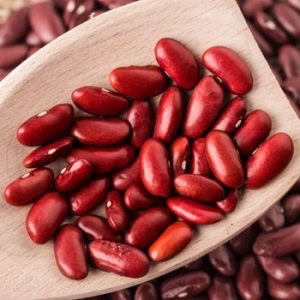
kidney beans can be white, light, or speckled, and they aren’t the same thing as red beans (More on that later). Kidney beans are best known for their appearances in chili or alongside rice, Cajun-style.
NUTRITION
(per 100g or 3.5 ounces)
Calories: 127
Water: 67%
Protein: 8.7 grams
Carbs: 22.8 grams
Sugar: 0.3 grams
Fiber: 6.4 grams
Fat: 0.5 grams
Apart from its ability to provide slow burning complex carbohydrates, kidney beans can increase your energy by helping to replenish your iron stores. Particularly for menstruating women, who are more at risk for iron deficiency, boosting iron stores with kidney beans is a good idea—especially because, unlike red meat, another source of iron, kidney beans are low in calories and virtually fat-free. Iron is an integral component of hemoglobin, which transports oxygen from the lungs to all body cells, and is also part of key enzyme systems for energy production and metabolism. And remember: If you’re pregnant or lactating, your needs for iron increase. Growing children and adolescents also have increased needs for iron.
RECIPE
- 3 tablespoons vegetable oil
- 1 large onion, chopped
- 1 cinnamon stick (2-in.)
- 1 bay leaf
- 1 tablespoon minced fresh garlic
- 1 tablespoon ginger
- 1 teaspoon fennel
- 1 teaspoon cumin seeds
- 3 green cardamom pods, cracked open
- 1/4 teaspoon cayenne
- 1/2 teaspoon ground coriander
- 1/2 teaspoon turmeric
- 1/2 teaspoon garam masala
- 1 can (14.5-oz.) whole peeled plum tomatoes, without juice
- 1 serrano chile, stemmed, seeded, and minced About
- 1 tsp. salt
- 6 cups cooked red kidney beans (about four 14-oz. cans), rinsed and drained
- 1/2 head cauliflower, cut into 1/2- to 1-in. florets
- 1 to 1 1/2 tbsp. freshly squeezed lemon juice
- 1/2 cup loosely packed cilantro sprigs, coarsely chopped
- 6 to 8 cups hot cooked brown rice
Direction
Step 1
Heat oil in a heavy-bottomed 4- to 5-qt. pot or saucepan over medium-high heat. Add onion and fry, stirring occasionally, 2 to 3 minutes, or until slightly softened. Stir in cinnamon, bay leaf, garlic, ginger, fennel, cumin, and cardamom and fry, stirring, 2 minutes. Add cayenne, coriander, turmeric, and garam masala and fry, stirring, 1 minute. Shred tomatoes into a pot with your fingers. Stir in serrano chile, salt, kidney beans, cauliflower, and 1 1/2 cups water. Lower heat to medium-low, cover, and simmer for 20 minutes, or until cauliflower is tender and liquid has thickened into a velvety-looking sauce (add more water if necessary).
Step 2
Season beans with salt. Stir in lemon juice and cilantro. Serve hot over brown rice, with plain yogurt on the side if you like.
Step 3
Note: Nutritional analysis is per serving of curry.
9.LENTILS
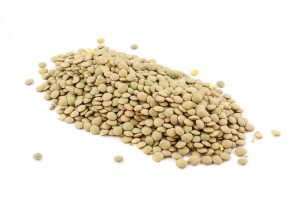
Another ancient legume, lentils are native to Central and West Asia but popular around the world. They work excellently in soups and stews, such as dal, but they can also be fried, baked, stuffed into breads, or ground into flour. Like other beans, lentils are nutritionally rich, particularly when it comes to protein, folate, thiamine, and iron.
NUTRITION (1 cup- 198g)
Calories: 230
Carbs: 39.9 grams
Protein: 17.9 grams
Fat: 0.8 grams
Fiber: 15.6 grams
Thiamine: 22% of the Reference Daily Intake (RDI)
Niacin: 10% of the RDI
Vitamin B6: 18% of the RDI
Folate: 90% of the RDI
Pantothenic acid: 13% of the RDI
Iron: 37% of the RDI
Magnesium: 18% of the RDI
Phosphorous: 36% of the RDI
Potassium: 21% of the RDI
Zinc: 17% of the RDI
Copper: 25% of the RDI
Manganese: 49% of the RDI
RECIPES
Lentil cake with mint yoghurt
Ingredients
- 2 1/2 tablespoons olive oil,
- divided 1/2 cup chopped yellow onion
- 1 tablespoon minced garlic
- 3/4 cup old-fashioned rolled oats
- 2 tablespoons red wine vinegar, divided
- 1 teaspoon kosher salt, divided
- 1/2 teaspoon black pepper
- 2 large eggs 1 (17.6-oz.) pkg.
- steamed brown lentils (such as Melissa’s)
- 2 cups packed baby arugula
- 2 cups packed baby spinach
- 3/4 cup plain whole-milk Greek yogurt
- 2 tablespoons fresh lemon juice
- 2 tablespoons finely chopped fresh mint
- 3 tablespoons chopped unsalted pistachios
Direction
Step 1
Heat 1 1/2 teaspoons oil in a large nonstick skillet over medium. Add onion and garlic; sauté 3 minutes. Place onion mixture, oats, 1 tablespoon vinegar, 3/4 teaspoon salt, pepper, eggs, and lentils in a food processor; pulse 3 to 4 times. Shape mixture into 12 patties.
Step 2
Heat 1 1/2 teaspoons of oil in a pan over medium-high. Add 6 patties to the pan; cook for 2 minutes on each side. Remove from the pan. Repeat with 1 1/2 teaspoons oil and remaining 6 patties.
Step 3
Combine remaining 1 tablespoon vinegar and remaining 1 tablespoon oil in a large bowl, stirring with a whisk. Add arugula and spinach; toss.
Combine remaining 1/4 teaspoon salt, yogurt, juice, and mint in a bowl. Divide arugula mixture among 4 plates; top each serving with 3 patties and 2 tablespoons yogurt mixture. Sprinkle evenly with pistachios.
10.LIMA BEANS
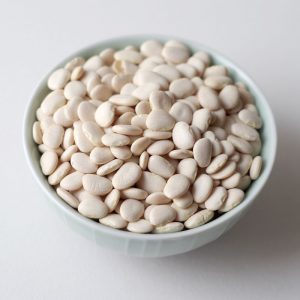
Also known as butter beans, lima beans are native to Central and South America—in fact, Lima, Peru, is their namesake. Lima beans are usually seen in dishes such as succotash, or simply boiled with a salty piece of meat. They’re particularly high in potassium, and like other legumes, can help stabilize blood sugar levels.
NUTRITION
Serving Size
1 cup (170g)
Calories 209
% Daily Value *
Total Fat 0.5g 1%
Saturated Fat 0.1g 1%
Trans Fat 0g
Cholesterol 0mg 0%
Sodium 28.9mg 1%
Total Carbohydrate 40.2g 13%
Dietary Fiber 9.2g 37%
Total Sugars 2.8g 6%
~ No added sugar data collected ~
Protein 11.6g 23%
Vitamin C 17.2mg 19%
Vitamin D 0mcg 0%
Iron 4.2mg 23%
Calcium 54.4mg 4%
Potassium 969mg 21%
Phosphorus 221mg 18%
RECIPE
Smoky turkey and sweet potato chili
- 1 1/4 pounds ground turkey
- 2 tablespoons olive oil
- 1 tablespoon tomato paste
- 1 cup Mexican beer
- 1 cup dried pinto beans
- 1 1/2 tablespoons chopped canned chipotle peppers in adobo sauce
- 1 tablespoon kosher salt
- 2 teaspoons ground cumin
- 1 teaspoon smoked paprika
- 1/2 teaspoon freshly ground black pepper
- 2 medium-size green bell peppers, coarsely chopped
- 1 (8-oz.) package dried lima beans l large onion, coarsely chopped
- 5 cups unsalted chicken cooking stock
- 2 1/2 cups 1/2-inch peeled sweet potato cubes
- Garnishes: green onions, cilantro, sweet mini pepper slices
Direction
Step 1
Season turkey with kosher salt and freshly ground black pepper. Sauté turkey in hot oil in a large skillet over medium-high heat 4 minutes or until browned. Transfer mixture to a 6-qt. slow cooker.
Step 2
Add tomato paste to skillet, and cook, stirring often, 30 seconds. Add beer, and bring to a boil, stirring to loosen browned bits from the bottom of the skillet. Boil 2 to 3 minutes or until reduced by half; stir into turkey mixture. Add beans and next 8 ingredients; stir in stock. Cover and cook on HIGH 7 hours. Stir in sweet potatoes; cover and cook on HIGH 1 hour or until potatoes are tender.
11.NAVY BEANS
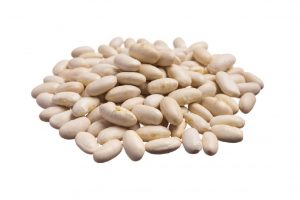
Navy beans (haricot beans ) , the legume of choice for baked beans, are a type of white bean native to (and domesticated in) the Americas. Unfortunately, navy beans don’t get their name from their color. Rather, they were frequently served to soldiers in the U.S. Navy. You’ll mostly see them in baked beans, but they’re also popular soup beans.
NUTRITION
One cup (182 grams) of cooked navy beans contains roughly (43):
Calories: 255
Protein: 15.0 grams
Fiber: 19.1 grams
Folate (vitamin B9): 64% of the RDI
Manganese: 48% of the RDI
Thiamine (vitamin B1): 29% of the RDI
Magnesium: 24% of the RDI
Iron: 24% of the RDI
RECIPE
Navy bean soup
Ingredients
- 2 1/4 cups dried navy beans (about 1 pound)
- 6 cups warm water
- 1 small yellow onion, peeled 3 whole cloves
- 2/3 cup chopped celery
- 3 thyme sprigs
- 3 parsley sprigs
- 3 smoked ham hocks (about 1 1/3 pounds)
- 1 bay leaf
- 3 cups chopped kale
- 2 cups (1/2-inch) cubed peeled Yukon gold potato
- 1 1/2 cups chopped Vidalia or other sweet onion
- 2/3 cup thinly sliced carrot
- 1 teaspoon salt
- 3/4 teaspoon freshly ground black pepper
- 2 tablespoons chopped fresh parsley
Direction
Step 1
Sort and wash beans; place in a large Dutch oven. Cover with water to 2 inches above beans; bring to a boil. Cook for 2 minutes; remove from heat. Cover and let stand for 1 hour. Drain beans; rinse and drain.
Step 2
Return beans to pan; cover with 6 cups warm water. Stud whole onion with cloves; place in pan. Add celery, thyme, parsley sprigs, ham hocks, and bay leaf; bring to a boil. Cover, reduce heat, and simmer for 45 minutes.
Step 3
Discard onion, thyme, parsley sprigs, and bay leaf. Remove ham hocks from pan; cool slightly. Remove meat from bones; finely chop to yield 1/3 cup meat. Discard bones, skin, and fat. Add meat, kale, potato, chopped onion, carrot, salt, and pepper to pan; stir well. Cover and simmer for 30 minutes or until beans and vegetables are tender. Stir in parsley.
12.PINTO BEANS
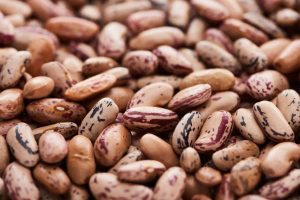
These brown, speckled beans are one of the most popular varieties around, especially in the Americas. They’re usually eaten whole, in a situation like a soup or chili, but they’re also popular mashed and then refried. Pinto beans are especially high in protein, manganese, fiber, and folate, and eating them can lower cholesterol, according to the American Society of Nutrition.
NUTRITION
One cup (171 grams) of cooked pinto beans contains roughly (40):
Calories: 245
Protein: 15.4 grams
Fiber: 15.4 grams
Folate (vitamin B9): 74% of the RDI
Manganese: 39% of the RDI
Copper: 29% of the RDI
Thiamine (vitamin B1): 22% of the RDI
RECIPE
Cheesy, smoky pinto beans
Ingredients
- 1 (15-ounce) can unsalted pinto beans, rinsed, drained, and divided
- 1/3 cup unsalted chicken stock (such as Swanson)
- 1 teaspoon smoked paprika
- 1/8 teaspoon kosher salt
- 2 ounces reduced-fat cheddar cheese, shredded and divided (about 1/2 cup)
Direction.
Place half of beans in a bowl; coarsely mash with a fork. Place mashed beans, remaining half of beans, chicken stock, paprika, and salt in a saucepan over medium heat; cook 4 minutes, stirring occasionally. Stir in 1 ounce cheese until melted. Divide bean mixture among 4 plates; sprinkle evenly with remaining 1 ounce cheese.
13.RED BEANS

Dude sure looks like kidney beans, but if you take a closer look, its shorter in size. Also known as adzuki beans, they are a type of mung bean (green gram, maash or moong). In East Asia, where they were cultivated, red beans are often sweetened and incorporated into desserts (Pastries stuffed with red bean paste, for example), but that doesn’t mean you can’t use them in savory dishes just as well.
NUTRITION
For a Serving Size of 0.25 cup (50g)
Calories 170 Calories from Fat 4.5 (2.6%)
% Daily Value *
Total Fat 0.5g –
Sodium 10mg 1%
Carbohydrates 30g –
Net carbs 27g –
Fiber 3g 12%
Protein 12g
Vitamins and minerals
Vitamin A 0μg 0%
Vitamin C 3.6mg 7%
Calcium 80mg 8%
Iron 2mg 25%
RECIPE
Vegetarian red beans and rice
Ingredients
- 1 pound dried red beans
- 3/4 pound frozen meatless smoked sausage, thawed and thinly sliced
- 3 celery ribs, chopped
- 1 green bell pepper, chopped
- 1 red bell pepper, chopped
- 1 sweet onion, chopped
- 3 garlic cloves, minced
- 1 tablespoon Creole seasoning Hot cooked long-grain rice Hot sauce (optional)
- Garnish: finely chopped green onions, finely chopped
Direction
Step 1
Combine first 8 ingredients and 7 cups of water in a 4-qt. slow cooker. Cover and cook on HIGH 7 hours or until beans are tender.
Step 2
Serve red bean mixture with hot cooked rice, and, if desired, hot sauce. Garnish, if desired.
14.SOYBEAN
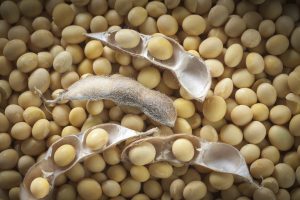
Soybeans might just be the most versatile bean out there: Just ask tofu, soy milk, soy meal, soy flour, miso, and liquid amino. Originating in East Asia, soybean cultivation predates written records, putting the protein-packed beans up there with garbanzo beans and lentils. That protein content makes them popular meat and dairy substitutes, but soybeans are also great on their own.
NUTRITION
One cup (172 grams) of cooked soybeans contains roughly (34):
Calories: 298
Protein: 28.6 grams
Fiber: 10.3 grams
Manganese: 71% of the RDI
Iron: 49% of the RDI
Phosphorus: 42% of the RDI
Vitamin K: 41% of the RDI
Riboflavin (vitamin B2): 29% of the RDI
Folate (vitamin B9): 23% of the RDI
The amino acid composition of soybean protein complements that of cereals. Also, the high biological value of soy proteins increases their value as feedstuff.
Trypsin and chymotrypsin inhibitors in flours lower protein digestibility. However, despite demonstrated growth inhibition in animals, due to antinutrients, methionine supplementation in infants is useful only when dietary protein intake is marginal.
RECIPE
Spicy yellow soybean, lentil and carrot curry
Ingredients
- 1 tablespoon olive oil
- 2 1/3 cups finely chopped onion
- 1 tablespoon red curry paste
- 4 cups vegetable broth, divided
- 2 cups finely chopped carrot
- 2 tablespoons minced peeled fresh ginger
- 1/8 teaspoon ground red pepper
- 3 garlic cloves, minced
- 1 cup dried small red lentils
- 1 (15-ounce) can yellow soybeans, rinsed and drained
- 1/3 cup minced fresh cilantro
- 1/4 teaspoon salt 1/4 teaspoon freshly ground black pepper
- 6 tablespoons plain fat-free yogurt Fresh cilantro sprigs (optional)
Directions
Heat the oil in a large saucepan over medium-high heat. Add onion; sauté 3 minutes or until tender. Stir in curry paste; cook for 1 minute. Add 1/2 cup broth, carrot, ginger, red pepper, and garlic; cook for 6 minutes or until carrot is tender, stirring occasionally. Add 3 1/2 cups broth, lentils, and soybeans; bring to a boil. Reduce heat; simmer 10 minutes or until lentils are tender. Stir in cilantro, salt, and black pepper. Divide evenly among 6 bowls; dollop with yogurt. Garnish with cilantro sprigs, if desired.
Beans contain a variety of nutrients and fibers with potential anticancer effects.
Fibers, such as resistant starch and alpha-galactosides, pass undigested down to your colon, where they’re fermented by friendly bacteria, resulting in the formation of Short chain fatty acids.
Short chain fatty acids like butyrate may improve colon health and lower your risk of colon cancer.
CONCLUSION OF THE MATTER
Beans is inarguably one healthy food filled with loads of goodness, fibre, phytochemicals and other nutrients.
Could be used in different cuisines and for different purposes.
But one thing is very obvious from this write up and that is the fact that out of 14 different species of beans, all of them have a higher amount of carbohydrate than protein.
SO?
No one should talk you into eating just beans because you are battling with spikes in your blood glucose.
Remember the incidence of flatulence that comes with eating beans, enjoy the new recipes.
Sources: https://www.myrecipes.com/ingredients/types-of-beans
https://www.healthline.com/nutrition/healthiest-beans-legumes
http://www.whfoods.com/genpage.php?tname=foodspice&dbid=52
